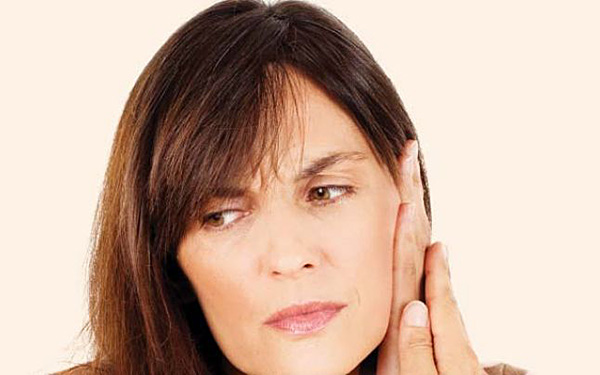Otitis Externa or swimmer’s ear is a painful condition that is accompanied by inflammation, irritation or infection of the ear. These symptoms often occur when from the water entering the ear, bacteria or fungi are locally spread.
Since this condition usually affects swimmers, it is known as swimmer’s ear. The disease can be often present in children and adolescents and in people who have eczema or excessive cerumen. The doctor will prescribe treatment for both relieving pain and treatment of infection.
Causes
The skin which cover the outside of the ear canal acts as a barrier against infections that could be caused by bacteria and fungi, but also against excessive humidity. The ear is protected from infection because the lining of the skin is slightly acidic. Any disruption of the mucosal skin can lead to infection, allowing bacteria or fungi to invade the outer ear.
This barrier can crack or break and could trigger infection in the following ways:
– Trying to clean your ears with cotton swabs – they can tear the lining of the ear canal and may diminish its protection.
– Excessive moisture in the ear canal due to shower or swimming modify the acidic environment of the ear canal, and allow the invasion of bacteria or fungi. This is why swimmer’s ear occurs mainly in the summer months.
– Presence of earplugs, hearing aids, headphones, and other devices that can be inserted into the ear canal, can increase the risk of triggering external otitis.
– Chemicals like hair dyes or shampoos can irritate the ear canal and can change its protective properties, enhancing the potential for infection.
– In general, any inflammation of the outer ear canal, such as infections, allergy, skin diseases can lead to swimmer’s ear.
The most common bacteria responsible for external ear infections: Staphylococcus aureus and Pseudomonas aeruginosa. In rare cases, fungus is the cause of swimmer’s ear.
Signs and symptoms
The main symptom of otitis externa is local pain that can be severe and gets worse when the outer ear is pulled, or when the ear is pressed. It can also be painful for a person with otitis externa to chew. Sometimes, before the pain to install, itching in the ear canal appears.
Swollen ear canal could cause a child to complain of fullness or discomfort in the ear. Outer ear becomes red and swollen, lymph nodes around the ear will expand and will be painful to the touch. Leak may be present inside the ear, clear, and similar to pus.
Hearing may be temporarily impaired due to pus or inflammation of the ear canal. Otitis externa is not contagious.
Treatment
Medication can relieve symptoms. Basic steps for treating swimmer’s ear include:
– Carefully cleaning the ear.
– Treating inflammation infection.
– Pain control.
– Sample collection inside the ear and its culture (to determine if bacteria are present).
– Avoiding the factors that may cause inflammation or infection.
If the ear is draining pus or debris, the doctor will thoroughly clean the ear canal before drugs are be placed in the ear. The ear canal can be cleaned with a plastic tool or a suction device. After cleaning, the doctor will insert a swab soaked with foam in the ear canal.
The buffer will facilitate drug absorption into the ear canal and remain soaked in it – acting on the skin lining.
The doctor will also prescribe medications that will be orally administered, if those obtained without prescription are not effective. Oral antibiotics are prescribed if the infection is severe.
Other remedies
Other remedies may be recommended – aimed at treating inflammation and infection that are classified in:
– Acidifying agents.
– Antiseptic.
– Anti-inflammatory agents.
– Antibiotics.
a) Acidifiers agents – are effective because bacteria found in otitis externa infection can not survive in a highly acidic environment.
b) Antiseptic agents – works by disturbing potential offending bacteria.
c) Anti-inflammatory agents – help reduce inflammation and pain. Some studies have shown that, in reducing the duration and relieve symptoms, a combination of anti-inflammatory agents and acidifiers have a much better action than monotherapy with acidifying agents.
d) Antibiotics – various antibiotics are available for the treatment of otitis externa. They are found in combination with the other three groups of drugs to increase treatment efficacy.
Among drops used to treat swimmer’s ear include four classes – antiseptic, acidifying, anti-inflammatory and antibiotic agents – are:
– Neomycin / polymyxin / hydrocortisone
– Neomycin / colistin / hydrocortisone
– Tobramycin / dexamethasone
– Ciprofloxacin / hydrocortisone
Oral or intravenous antibiotics are generally used in for treatment. However, they may be indicated in severe infections, in people suffering from diabetes or who have weakened immune systems. They can also be used if topical application of ear drops is not possible because of severe inflammation and closure of the ear canal. In complicated cases of otitis externa, oral antibiotics are helpful.
Less commonly, infection of otitis externa can be caused by a fungal infection (otomycosis). Typically, this condition is suspected in people who do not respond to usual treatment for swimmer’s ear, or those living in tropical climates or in people who previously had multiple infections.
Fungal infection can cause intense itching, but less pain, compared with bacterial infections. Treatment for otitis externa fungal infection focuses on combining topical antiseptics, acidifying agents, inflammatory substances and antifungal agents.


